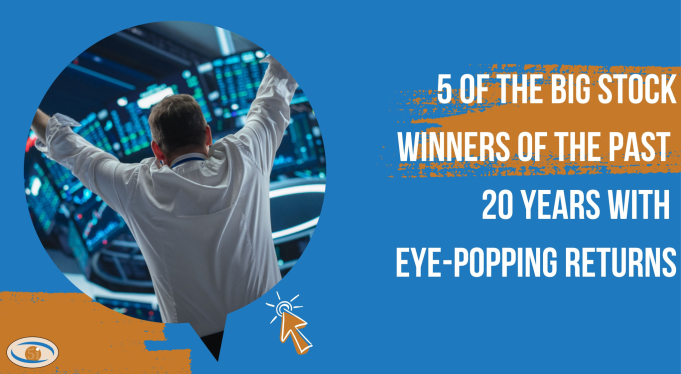Here are some lessons to learn from these big-name and lesser known stocks
It is true that fortunes can be made in the stock market. Pick the right stock, at the right time, and hold on for the right amount of time (i.e. very long) and you too might be able to brag about a 10,000 per cent return one day.
But it is harder than investors think. First, you have to pick a growing company, preferably one that few have heard of. Typically, these are smaller companies, which adds more risk. That’s not really the hardest part, though. The hardest part of ending up with a giant winner is holding on. Not only do investors need to fight the urge to sell (you can never get a 10,000 per cent return if you sell after the first 1,000 per cent), but investors need to hang on when their stocks drop, sometimes precipitously. It’s well known that Amazon.com Inc. had a drawdown of more than 94 per cent during the dot-com implosion. It is a rare investor indeed who can hold on to a stock and see their gains evaporate into giant losses and still keep the faith. Amazon investors who held on, or better yet bought at the bottom, made out like bandits, with the stock’s 15,324 per cent 20-year return.
Sorry, we can’t tell you which stocks will be the next giant winners. We can still help in the search for winners, though, by looking at five of the big stock winners of the past 20 years, and then try to understand what went right for these companies. Due to their huge success investors surely know a few of them. But we bet there are two that are far less widely known, even though they have been big winners. Let’s go. (All data is supplied by Bloomberg LP.)
Netflix Inc.
Market cap: US$507 billion. Year to date (YTD) return: about 33 per cent. One-year: 83.2 per cent. Five-year: 173 per cent. Twenty-year: 52,280 per cent.
Netflix, of course, invented streaming, and suddenly consumers no longer had to drive to the video store for entertainment and pay outrageous late fees. In hindsight, we all should have seen this one ahead of time. In the early 2000s you might have paid $4.99 for a single movie rental, whereas you could get effectively unlimited entertainment from Netflix for $10.99 a month. After pioneering streaming and offering low prices, Netflix raised its prices, took its profit and invested in original entertainment and content, further cementing its market share lead.
Lessons learned: Establish market share first before raising prices and invest to maintain leadership.
Apple Inc.
Market cap: US$3.1 trillion. YTD return: about -17 per cent. One-year: eight per cent. Five-year: 161 per cent. Twenty-year: 15,325 per cent.
In 1986, lots of investors bought Apple shares at less than 10 cents a share (price adjusted for splits). If you bought then and still own shares your return would have been — wait for it — 240,609 per cent. Apple succeeded for many reasons but essentially it revolutionized technology with the iPhone, iPad and services, achieving massive sales and recurring revenue. But it also had huge success simply branding its products. Often its products were not much better than competitors’, such as the iPod versus an MP3 player. But the company’s marketing convinced consumers that its brand has status. With product success the company then shifted to higher-margin services, which investors value more highly.
Lessons learned: Create products that people love and invest in your brand as much as you invest in technology.
Nvidia Corp.
Market cap: US$3.3 trillion. YTD return: about zero per cent. One-year: 41 per cent. Five year: 1,431 per cent. Twenty-year: 61,214 per cent.
At one time, not long ago, the largest company in the world by market cap, Nvidia saw its success come from the explosive demand for graphic processing units (GPUs). The company cut its teeth on gaming chips, at one time responsible for more than 70 per cent of its sales base. Its chips were seen as faster, more efficient and simply better than the competition’s. Then Nvidia had its breakthrough: it essentially said, “What other sectors need faster, more-efficient chips?” The answer: just about everything; robotics, autonomous cars, manufacturing, cryptocurrency mining, data analytics, and the big one, artificial intelligence (AI). Suddenly, demand for Nvidia’s products, and demand for its stock, exploded and the rest, as they say, is history.
Lessons learned: Well, with any company it is usually pretty good if you are better than the competition at something. Investors should look at market share and sales growth to see which company is winning more business than others. This is often a tell-tale sign. Also, look at margins: High growth is not as good if you are not making money.
Booking Holdings Inc.
Market cap: US$172.8 billion. YTD return: about 6 per cent. One-year: 40.1 per cent. Five-year: 233 per cent. Twenty-year: 21,585 per cent.
Booking, formerly The Priceline Group, leveraged global growth with technology and AI to expand bookings and improve efficiency, boosting profitability. It then made solid acquisitions such as OpenTable Inc. and, like Apple, invested heavily in its brands.
Lessons learned: A simple business, such as travel, can still be highly profitable if technology is used and costs are maintained.
Texas Pacific Land Corp.
Market cap: US$31.5 billion. YTD return: about 23 per cent. One-year: 126 per cent. Five- year: 610.8 per cent. Twenty-year: 12,750 per cent.
We bet few readers have heard of this company. After all, it’s kind of a boring industry compared to the excitement of the other four. Texas Pacific Land owns tracts of land, previously the property of the Texas and Pacific Railway Co. Its income is derived from land sales, leases to oil and gas developers, leases to farmers, royalties and interest. The company owns nearly 900,000 acres of land, or about 3,600 square kilometres. The company’s margins are high and it profited from oil and gas royalties with minimal operational risk (it basically just cashes cheques), low operating costs and soaring drilling activity. It has never had any debt and earnings per share have gone from 26 cents U.S. in 2005 to US$19.72 per share last year. Despite its success, it has only one analyst following the company. It also has about nine million fewer shares than it did in 2005 due to buybacks.
Lessons learned: Keep your balance sheet clean and your costs low. Keep your share count low, or, even better, declining. There is no need to be fancy and flashy and entertain Wall Street analysts if your earnings growth is strong enough.
Unlock the Power of Informed Investing with 5i Research!
DIY investing doesn't have to mean going it alone. At 5i Research, we're your trusted partner in navigating the stock market. Our platform offers comprehensive stock and market research, empowering you to make smart investment decisions.
- Investor Q&A: Have burning questions? Get answers from our team of experts and fellow investors in our dedicated Q&A section.
- Research Reports: With over 60 meticulously researched Canadian stocks, our reports offer in-depth analysis, giving you the confidence to invest wisely.
- Model Portfolios, Alerts, Forums, Portfolio Tracking, and Much More.
Take Care,







Comments
Login to post a comment.